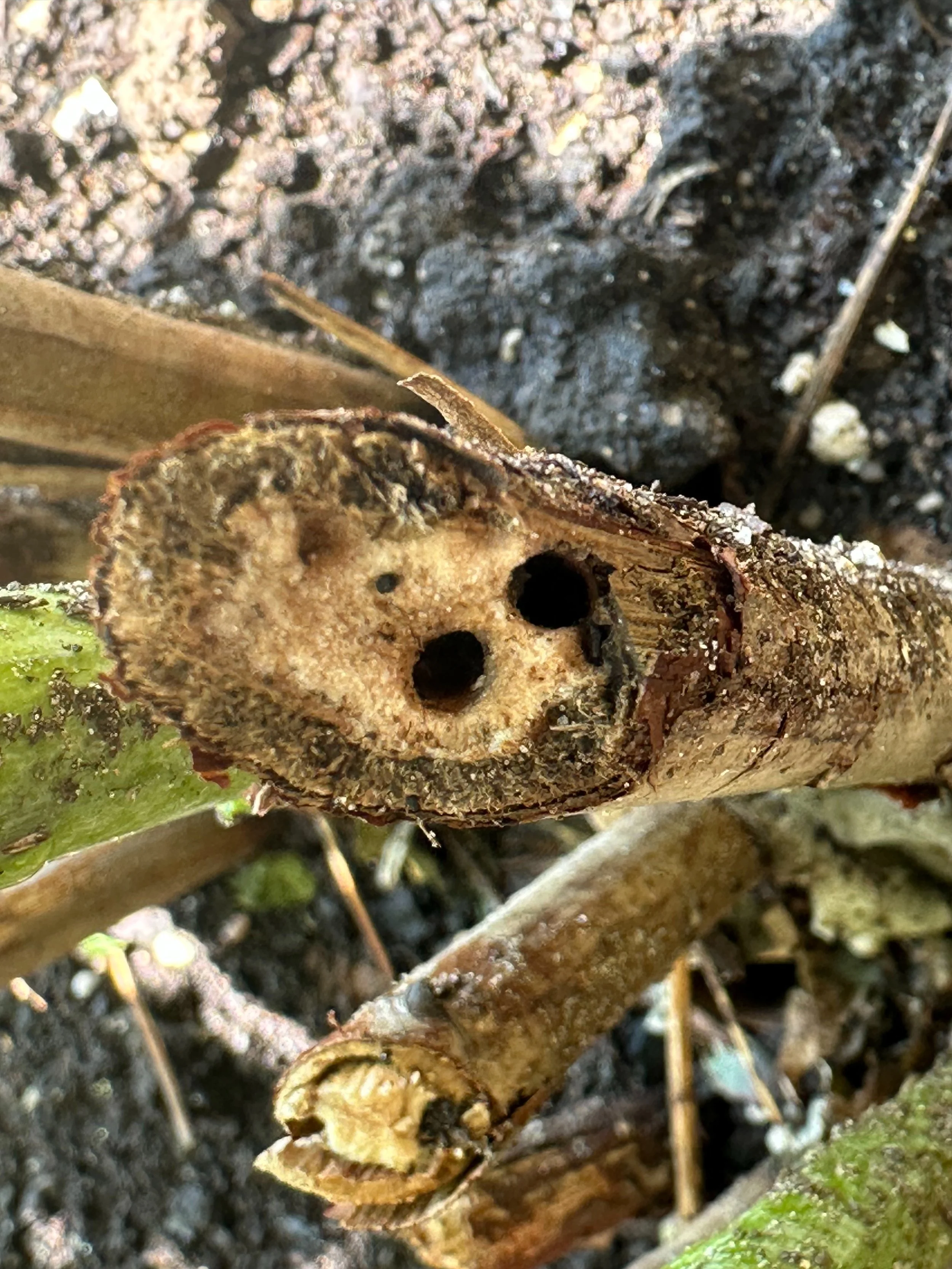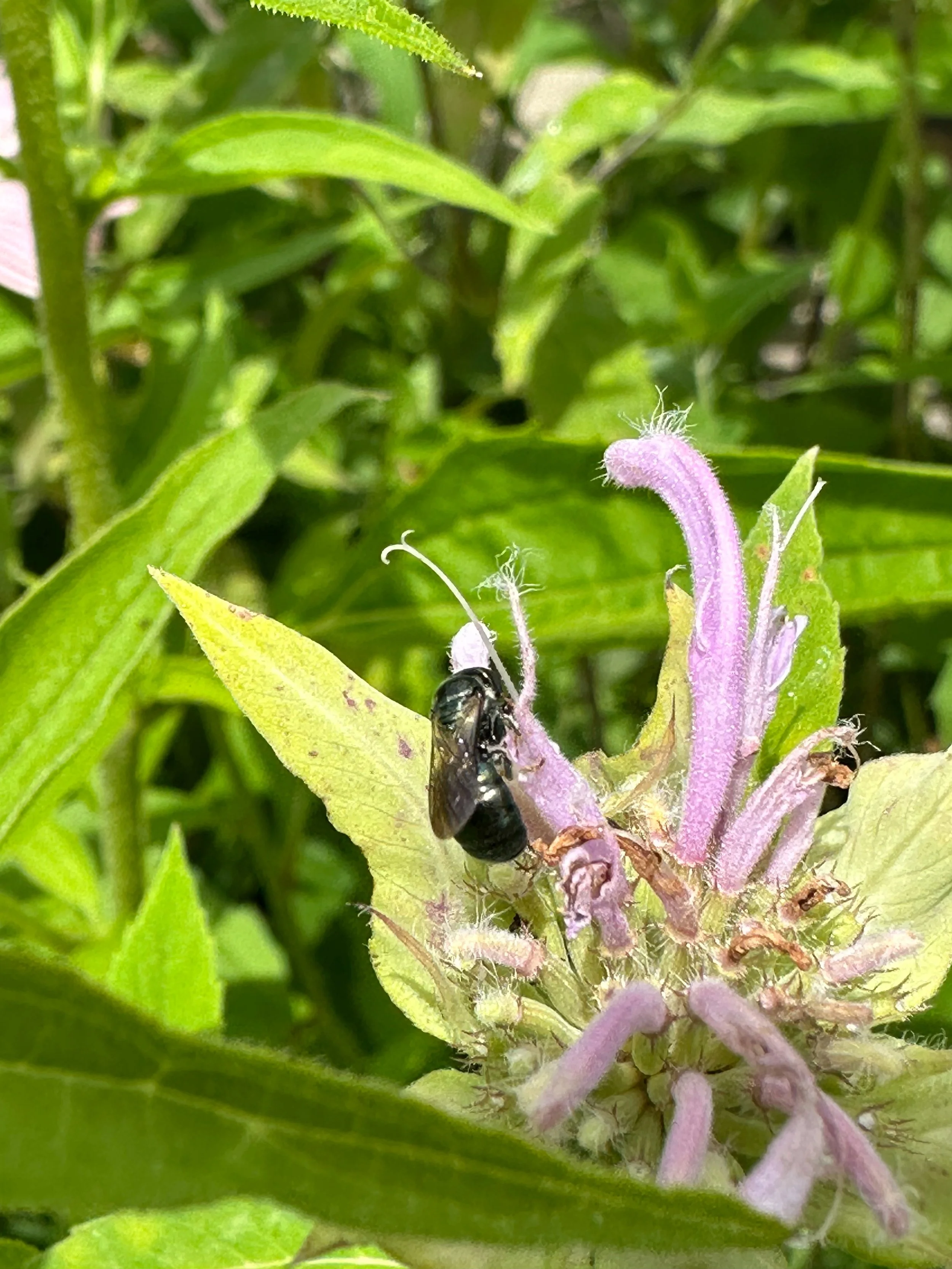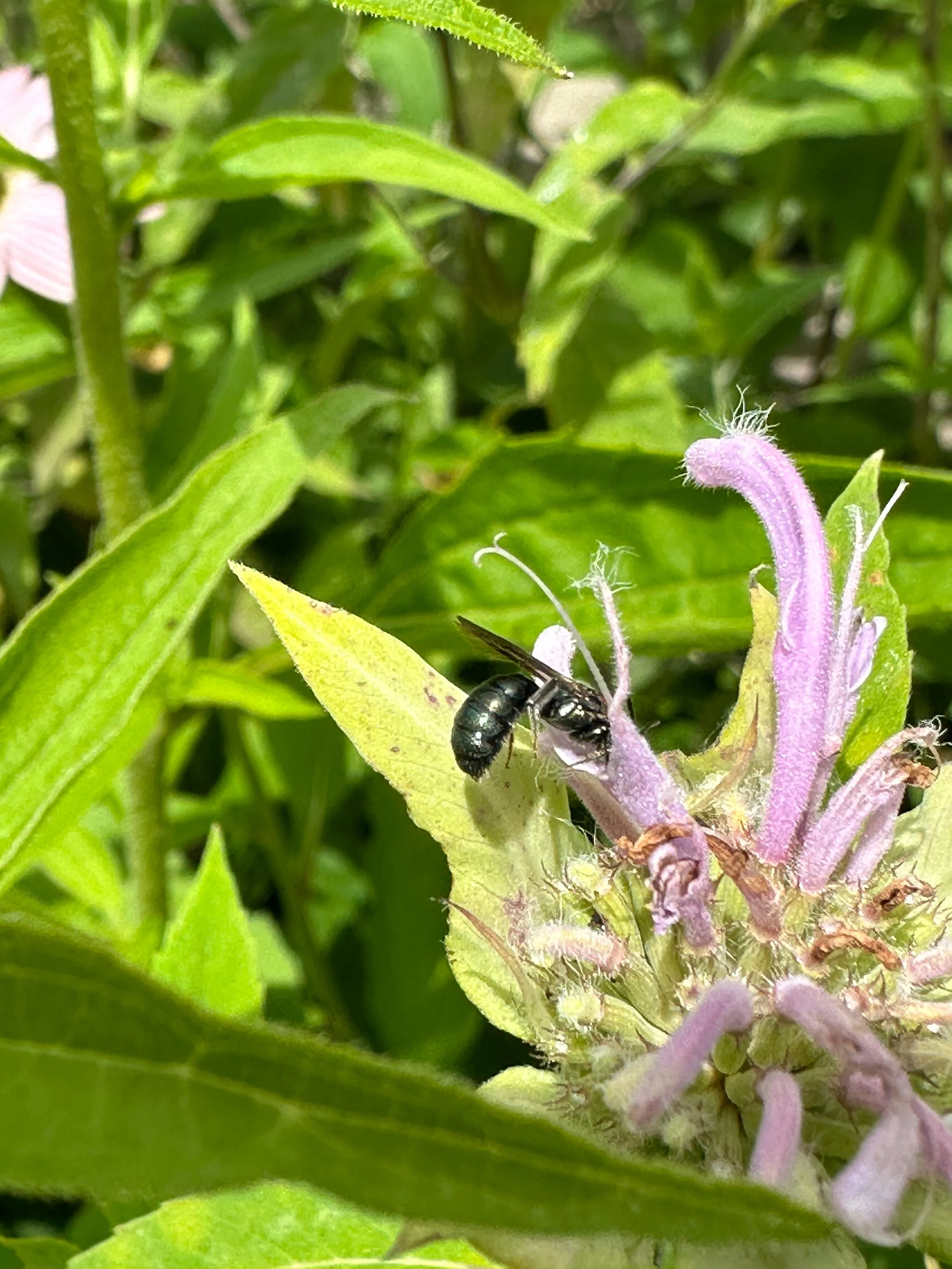Small Carpenter Bee
Meet the Small Carpenter Bee (Ceratina species)—a tiny, metallic marvel that breathes life and vitality into your garden. With their shimmering black or blue-green sheen, these bees are dazzling, industrious workers that thrive during the warmer months. Their gentle nature makes them perfect companions for any gardener, as they are highly unlikely to sting and endlessly delightful to watch.
These little pollinators are masters of ingenuity. Picture them meticulously carving intricate nests within the soft, pithy stems of plants like elderberries, sumac, or sunflowers. Each nest is a miniature marvel—hollow chambers neatly divided into snug cells, where every egg is accompanied by a carefully crafted stash of pollen and nectar. By leaving plant stems intact over the winter or practicing thoughtful pruning, you can create a haven for these architectural wonders.
But the brilliance of the Small Carpenter Bee doesn't end there. During the colder months, adult bees shelter within these very stems, entering a state of dormancy to weather the winter. Their overwintering nests double as nurseries for their young—the brood laid during the previous season. Nestled safely within, the young develop and await the arrival of spring. When the warmth of the new season stirs, both the adults and their newly matured offspring emerge from their cozy winter homes, ready to resume their tireless work.
And tireless they are! These bees buzz from flower to flower, diligently collecting nectar while spreading pollen in their wake. Their pollination efforts are vital for plant health and ensure a vibrant, flourishing garden. Because of their short flight radius, they stay close to their nests, making native flowers with staggered bloom times essential for providing year-round nutrition. With a well-curated selection of plants, your garden can become their own buzzing paradise.
What makes these bees even more extraordinary is their social flexibility. While many females build solitary nests, others collaborate, sharing nesting spaces with fellow females in a cooperative effort. And some species of Small Carpenter Bees have an astounding adaptation—parthenogenesis—where females can reproduce without males, effectively cloning themselves and ensuring the continuation of their species.
Creating a bee-friendly garden is not just a gesture of kindness; it’s a beautiful partnership with nature. By offering these miniature pollinators both food and shelter, you’re contributing to biodiversity and fostering a magical, harmonious ecosystem. So why not invite these enchanting little creatures into your outdoor space and let them transform your garden into a sanctuary of life?
If you're curious about which native flowers to plant with staggered bloom times to attract Small Carpenter Bees and other pollinators, have a look:





